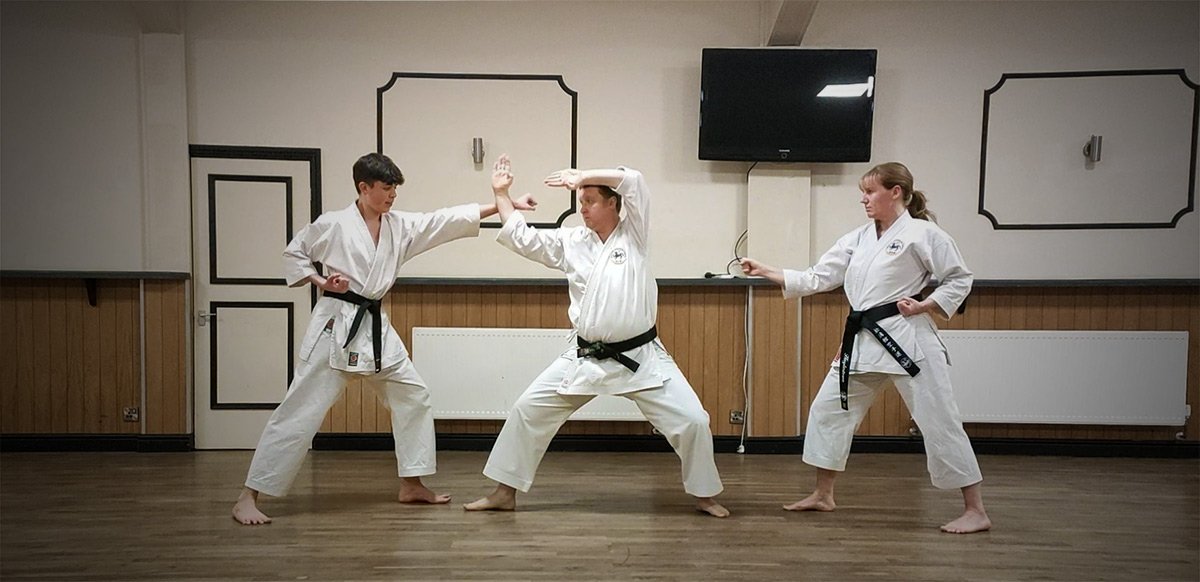
Jiyu Kumite
Free Fighting
In Shotokan Karate, Jiyu Kumite (free fighting) is the build up from Kata, Ippon, Sanbon and Gohon Kumite, bringing all elements of blocks, strikes, punches, kicks, distance and timing together in a free fighting style. It is practiced as much as kata, if not more.
There are two forms of styles of Kumite, traditional and competition. This section talks about the Traditional Kumite and the various types within. Kumite is not easy to learn and everyone’s style is different. Techniques that are shown by the instructors may work for you and other techniques may not, so one has to develop their own style of fighting. It is equally important to know yourself and know your limits, i.e. know which techniques best suit and work for you.
At the SSK protective equipment such as feet/shin guards, gloves and head gear are not permitted. Karate is an art, therefore all attacks are focused on the skin of your partner. Over time we teach the students to hit the opponent with full power but control the attack on to the body, as this is the art of Karate, showing the attacker that if they want to they could hurt them, but never doing so. Chest protectors are permitted for all female Karate-ka should they wish to use them.
For more realistic applications, students are taught to attack through the attacker to do the damage. To practice this we use the kick pads and punch bags that are available to us. This way students can feel the contact of a moving target to help with their control and technique. At no time is the use of such force permitted on a training partner.
Understanding Jiyu Kumite
Jiyu kumite is required for grading's from 5th Kyu onwards (yellow – black). The levels of kumite will increase per grade as the students will become more confident in their ability to apply what they have learnt in classes. Techniques will become more fluid, and kicks and sweeps will be employed gradually.
Point scoring
In Kumite, you can be awarded either half points (Waza Ari) or full points (Ippon), depending on the attack used. In the grading, you need one full point to win a match. A point is scored when a punch or kick has made contact to your opponent in the correct area, and the arm or leg is straight, the stance is strong and a kiai is used with focus.
To effectively score points in Kumite, you need to know where the target areas are. When sparring, many people throw lots of punches and kicks but never hit the mark. Here are the target areas that you should be aiming for, which will earn a Waza-ari or Ippon point in a match.
Head – nose, chin or temple
Neck – either side
Chest – solar plexus
Side of body – ribs
Groin – extreme focus
Back – kidneys
Etiquette of Kumite
There is a set routine that must be followed when called up for a sparring match:
Face the instructor/referee and bow
Turn and face your opponent and bow
Move into ready stance (yoi)
Begin on the instructor/referees command
At the end of the match you will move back to your original positions and face the instructor/referee again, as he declares the result. You will then bow to the instructor/referee, turn and bow to your opponent and finally shake hands at the end.
